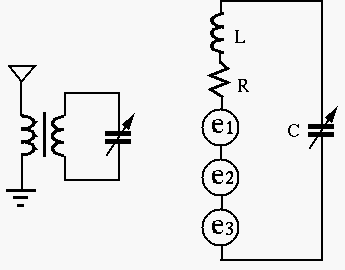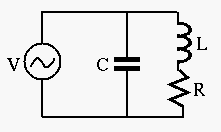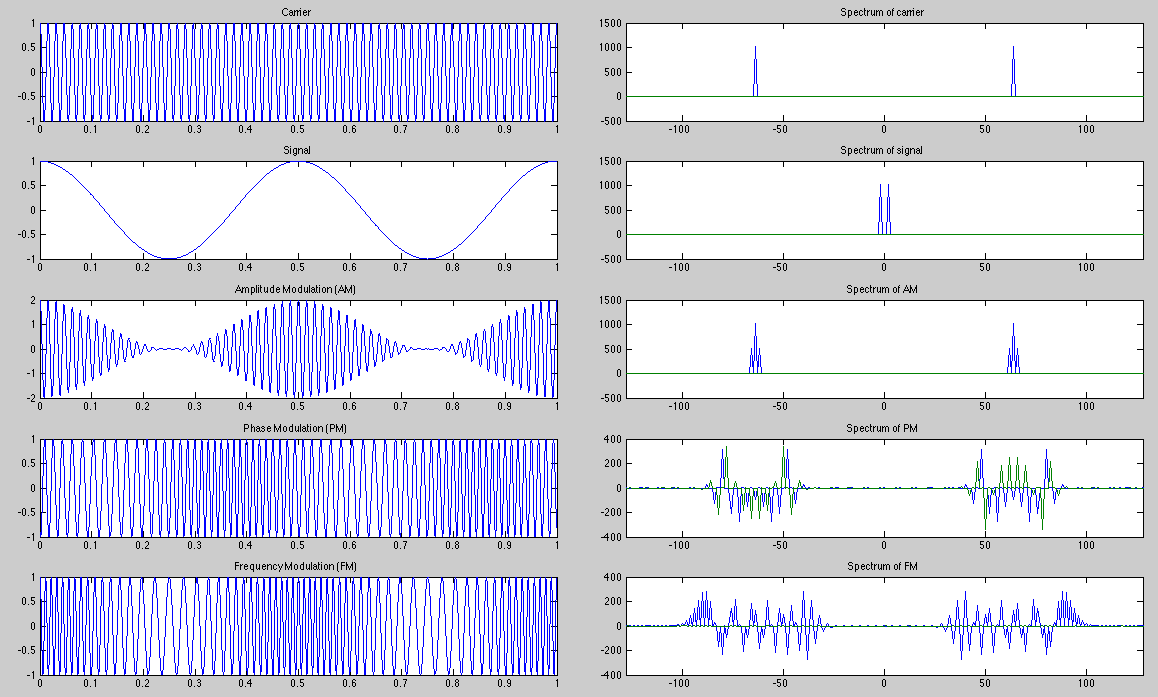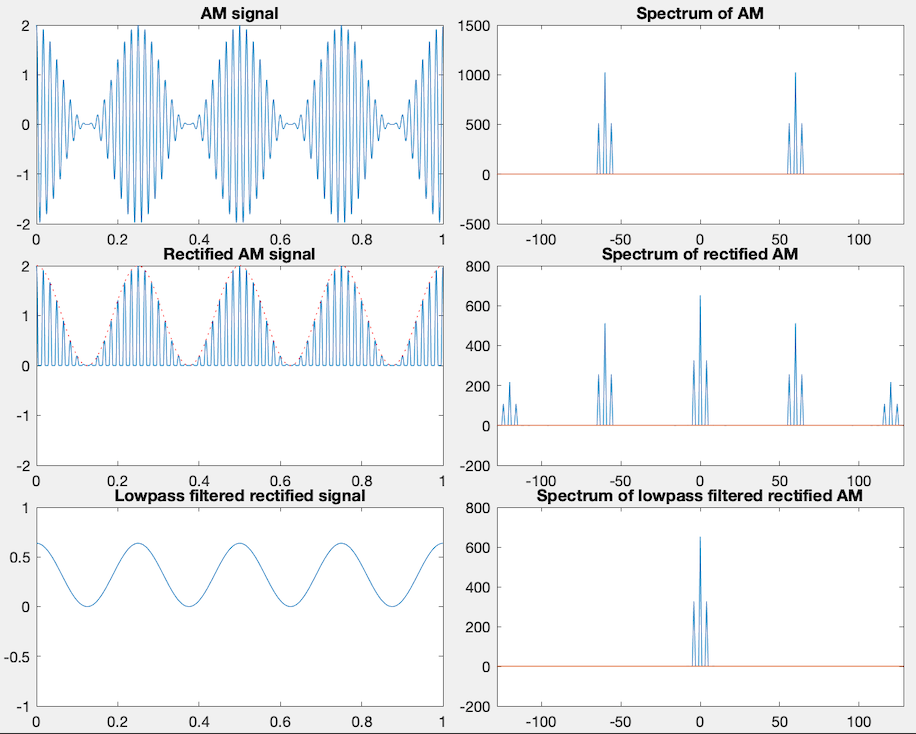Next: Real and Reactive Power Up: Frequency Response Functions and Previous: Second-order system as a
Broadcasting and Frequency Allocation
The Federal Communications Commission (FCC) has very specific frequency allocation regulations, see the FCC frequency allocation chart.
Example 1:
Resonant circuit is widely used in radio and TV receivers to select a
desired station from many stations available. The tuning circuit shown
in the figure below is a series RCL circuit composed of an inductor




If 




Solution:
 |
(366) |
 |
(367) |
 |
(368) |
 |
(369) |
Example 2:
Assume



Solution: At the desired resonant frequency

 |
(370) |
 of this circuit is
of this circuit is
 |
(371) |
 |
(372) |
 |
(373) |
 |
(374) |
 |
(375) |
 is
is
 |
(376) |
 is
is
 |
(377) |
 times the voltage
times the voltage
 across
across  (same as the voltage source).
(same as the voltage source).
Example
In reality, all inductors have a non-zero resistance, therefore a parallel resonance circuit should be modeled as shown in the figure.

The admittance is:
 |
 |
 |
|
 |
![$\displaystyle \frac{1}{R^2+\omega^2L^2}[R-j(\omega L-\omega C(R^2+\omega^2L^2))]$](img1021.svg) |
(378) |
 appears in the real part
appears in the real part
![$Re[Y(\omega)]$](img1022.svg) as well
as in the imaginary part
as well
as in the imaginary part
![$Im[Y(\omega)]$](img1023.svg) , the frequency that minimizes
, the frequency that minimizes
 has to be found by solving
has to be found by solving
 |
(379) |
 associated with the
non-ideal inductor is large enough (e.g.,
associated with the
non-ideal inductor is large enough (e.g.,  ), all previous discussed
relations for ideal inductors still hold approximately, and the resonant
frequency
), all previous discussed
relations for ideal inductors still hold approximately, and the resonant
frequency  can still be found approximately by the previous
approach by letting
can still be found approximately by the previous
approach by letting
![$Im[Y(\omega)]=0$](img1028.svg) :
:
 |
(380) |
 to be real, we must have
to be real, we must have
 i,e, i,e, |
(381) |
 , and the resonant frequency is
, and the resonant frequency is
 |
(382) |
Note: For the same reason, when considering the transfer function
of a series RCL circuit when the output is the voltage across either 








Amplitude, Phase, and Frequency Modulations
In radio or TV broadcast, the audio or video signal 




The amplitude of the carrier is modulated by the signal 
![$\displaystyle x(t)=\cos(\omega_c t)\,[1+k_a s(t)]$](img1038.svg) |
(383) |
 is the amplitude modulation index, and we assume the
amplitude of the signal is no greater than 1. For example, if the signal
is sinusoidal
is the amplitude modulation index, and we assume the
amplitude of the signal is no greater than 1. For example, if the signal
is sinusoidal
 and
and  , then the modulated
signal is:
, then the modulated
signal is:
![$\displaystyle x(t)=\cos(\omega_ct)[1+\cos(\omega_st)]
=\cos(\omega_ct)+\frac{1}{2}[\cos(\omega_c+\omega_s)t+\cos(\omega_c-\omega_s)t]$](img1042.svg) |
(384) |
 in the signal, a bandwidth of
in the signal, a bandwidth of
 centered around the carrier (or central) frequency
centered around the carrier (or central) frequency  is required.
is required.
The phase of the carrier is modulated by the signal 
 |
(385) |
 is the phase modulation index. For example, if the signal is
sinusoidal
is the phase modulation index. For example, if the signal is
sinusoidal
 , then the modulated signal is:
, then the modulated signal is:
 |
(386) |
 is the phase modulation index. The phase angle of the carrier
is modulated to vary within the range of
is the phase modulation index. The phase angle of the carrier
is modulated to vary within the range of
 .
.
The frequency of the carrier is modulated by the signal 
 |
(387) |
 is the frequency modulation index. As
is the frequency modulation index. As
 ,
the angle is also time variant:
,
the angle is also time variant:
 |
(388) |
 |
(389) |
 , then
the modulated signal is:
, then
the modulated signal is:
 |
(390) |

The amplitude-modulated signal can be demodulated to recovered the signal


In any of the three case above, it requires a certain bandwidth around the
carrier frequency 

In digital broadcasting, the information to be broadcast is first converted into digital signal, which is then used to modulate the phase, amplitude or frequency of the carrier signal at certain radio frequency: